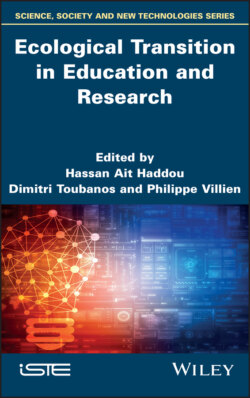Читать книгу Ecological Transition in Education and Research - Группа авторов - Страница 17
1.5. The “Architecture and Climate” research team
ОглавлениеAll these suggested concepts have been developed by the “Architecture and Climate” research team1 from the Faculty of Architecture, Architectural Engineering and Urban Planning of the University of Louvain-La-Neuve, in Belgium.
To develop a team, a real team, in the sense of a football or a rugby team, you have to bring people together through goals that everyone can share.
The “Architecture and Climate” team has three goals.
The first goal is to develop and disseminate scientific knowledge. As academics we have to validate what we say, we cannot just make assumptions. Our audience is architects, and our areas are: energetics, lighting, materials (from raw material to recycling and material reuse), water (which we consider to be the next big world problem after energy), waste (potentially new materials) and historical heritage. On every occasion we focused on a definition of things, which allowed us to have a vision: the “Architecture and Climate” vision. It is important to disseminate this information in publications, but also to transmit it by means of conferences, courses and meetings. It is necessary to create synergies, to develop a worldwide network of reflection, so that results are even stronger and more in-depth. We have to become involved in the public and the regional debate, to get out of the ivory tower and keep a realistic approach, to stay firmly anchored in the ground. We have to translate the results into a language architects can understand.
The second goal reflects our values: to cultivate a team spirit, being open to the world (to host, to travel), to ensure a work of excellence enabling each team member to flourish and develop personally, to apply the principles of sustainable development on a daily basis as much as possible.
The last goal stipulates that each research project must aim for excellence. Even if this is rarely achieved, it should be a target. It is advisable to communicate one’s research, to compare results with others in order to reassure oneself and feed one’s own reflection. To be a good researcher is to be creative, analytical, and above all, to be very critical of one’s own work.
Our first books came out in 1983. We were very proud, because they were taken up by the European Commission and distributed across European Schools of Architecture. They were also taken up by the energy department in the United States and distributed to architects. At that point, we used to discuss winter thermal comfort, which was not new, but also summer thermal comfort, which was relatively new, and natural ventilation and natural lighting, which was completely new.
On every occasion, each research project is placed within its context, even if we are doing very specific research. It is a bit like a puzzle: cutting-edge research is one piece of the puzzle, but once the research project is completed, the result of that piece is put back into the puzzle. Here are some examples of research developed in the team: the thermoair circulation, double-skin facades, the launch of the Energie+ encyclopedia, lime hemp plaster, the urban square and the microclimate, the renovation of the built heritage with interior insulation (which is rare in Belgium), the construction of a model house in 1992 with 250 measurement points and a consumption of 18 kWh/m2 energy need (compared to a 450 kWh/m2 energy need at ENSAM), a study of emergency tents for the Red Cross which can respond to several climates and be light and small for transport by plane and the publication of the Monitor’s “Treatise of architecture and bioclimatic urban planning” together with ADEME.
In terms of light and lighting, we created an artificial solar system for models. In terms of light, there is no scale effect. If you build a model with the colors matching your future building, you will take exactly the same photo in the model as in your future building.
Regarding water management at the district level, rainwater is not supposed to return to the sewer. It should return to the ground in order to supply groundwater, which is not obvious for increasingly mineralized urban planning. We have developed software that is based on soil permeability, the type of rain or the moment when the rain arrives. For example, when the ground is completely hardened and a strong thunderstorm arrives, water does not seep in. At that moment, it would be necessary to have very fine, typically Belgian drizzle, which sprinkles and moistures all over. The software can inform landscapers about the dimensions and types of plants for valleys.
We are working on heat storage in materials. Our dream is to find a solid-solid phase change material. When this material is found, a building will never need to be heated or cooled again. It will be a small revolution in the construction world.
In terms of education, energy managers have been trained since 1989. We developed the EDUCATE – Sustainable Architecture project at the European level, whose purpose was to compare the place of sustainable development in the curricula of European architecture schools and to suggest accompanying actions.
The activities were developed within the International Energy Agency of the European Community of the Federal State of Belgium by means of research and energy contracts, and, from time to time, in collaboration with the industry.
In 2005, we created the MATRIciel spin-off2, because we gave a lot of advice to developers, design offices and architects, without being able to take legal responsibility. MATRIciel is a research and consulting office in energy, the environment and special techniques (as TRIBU is in France).
Here are some results in figures, provided by the research team: 3 international conferences, 25 books, the Energie+ website (Cstb in France), 115 articles over the last 10 years and 32 doctorates presented.
